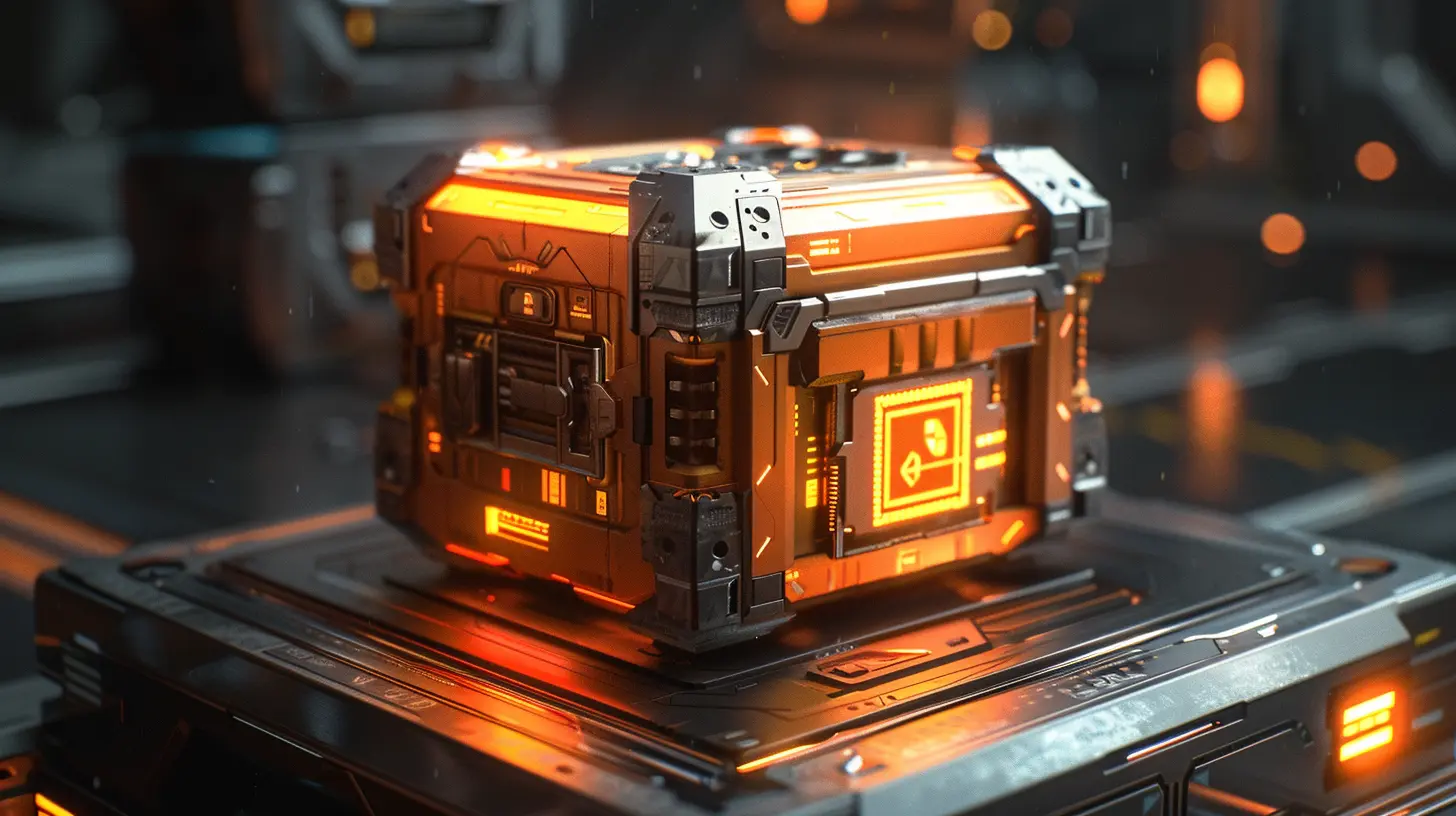How Loot Boxes Influence In-Game Economies and Marketplaces
19 October 2025
If you’ve spent any time gaming in the last decade, chances are you’ve encountered loot boxes. You know, those shiny little treasure chests that promise rare items, cool skins, or game-changing upgrades? They pop up in everything from first-person shooters to mobile games, tempting you with the thrill of the unknown. But here’s the thing: loot boxes aren’t just a fun side feature—they have a massive impact on in-game economies and marketplaces. Whether you love them or hate them, loot boxes are shaping the way players interact with games and, let’s face it, how much money they spend.
So, let’s dive into the nitty-gritty of how loot boxes work, their controversial reputation, and, most importantly, how they influence the virtual worlds we love to play in.
What Are Loot Boxes, and Why Are They Popular?
Loot boxes are essentially virtual grab bags. When you purchase—or sometimes earn—one, you’re rewarded with a random assortment of in-game items. These could be anything from character skins and weapon upgrades to rare collectibles. It’s like opening a pack of trading cards, where the excitement lies in not knowing what you’ll get.Why are loot boxes so popular? Two main reasons: psychology and value. The act of opening a loot box is thrilling because it taps into something called “variable reward schedules.” It’s the same principle that makes slot machines addictive—you’re chasing the high of that rare, coveted prize. And when you see other players rocking flashy skins or high-tier gear, it’s hard not to feel the urge to join in. After all, who doesn’t want to stand out or gain a competitive edge?
The Economics of Loot Boxes
Loot boxes aren’t just about fun and games—they’re a massive revenue stream for game developers. In fact, in 2022 alone, the global loot box market was estimated to generate billions of dollars. But where does all that money come from? And how does it flow back into the in-game economy?1. Game Monetization
First and foremost, loot boxes are a way for developers to monetize games, especially free-to-play ones. Instead of charging upfront, developers rely on microtransactions—which often include loot boxes—to keep the cash rolling in. This model lowers the barrier to entry, attracting more players, while still offering a way to rake in revenue from dedicated fans.But here’s the kicker: loot boxes often come with a layer of artificial scarcity. Developers may limit the availability of certain items, creating a sense of urgency. Think about those “limited-time” loot boxes or seasonal events. They make you feel like if you don’t buy now, you’ll miss out forever. It’s clever marketing, no doubt, but it also fuels a cycle of spending that can escalate quickly.
2. Supply and Demand Within Games
Loot boxes also influence the in-game supply and demand for items. Let’s say a loot box contains a rare skin with only a 1% drop rate. The rarity instantly makes that skin more desirable, driving up its perceived value. In some games, players can trade items obtained from loot boxes, creating a secondary market. This adds another layer of complexity, as players are now not only gambling on loot boxes but also engaging in peer-to-peer transactions to acquire specific items.And let’s not forget: developers sometimes tweak drop rates or introduce new loot boxes to balance (or destabilize) the in-game economy. It’s like a virtual stock market where the developers hold all the power.
Loot Boxes and In-Game Marketplaces: A Symbiotic Relationship
Loot boxes and in-game marketplaces go hand in hand. Marketplaces allow players to buy, sell, or trade items, often using in-game currency or even real money. But how do loot boxes fit into the equation?1. Player-Driven Economies
In player-driven economies, loot boxes serve as the initial source of items. For example, in games like Counter-Strike: Global Offensive (CS:GO), players open loot boxes to obtain weapon skins. These skins can then be traded or sold on platforms like the Steam Marketplace, where prices fluctuate based on rarity and demand.What makes this fascinating is the real-world value attached to virtual items. Some rare skins in CS:GO have sold for thousands of dollars. Think about that for a second—it’s like pulling a rookie card from a pack of baseball cards and flipping it for cash. The difference? This all happens in a virtual space, fueled by a mix of luck, skill, and market speculation.
2. Regulation vs. Chaos
However, not all games have robust marketplaces. In some cases, the lack of regulation leads to chaotic and unpredictable in-game economies. Without a marketplace, players might resort to unauthorized third-party sites to trade items, often at inflated prices. This not only creates risk for players but also means developers lose control—and potential revenue.Regulated marketplaces, on the other hand, provide a safer and more transparent trading environment, but they also further entwine loot boxes with real-world money. Once players see they can earn cash by reselling items, it adds another layer of incentive to buy loot boxes in the first place. After all, who wouldn’t want to spin the virtual wheel if there’s a chance to make a profit?
The Good, the Bad, and the Ugly: Player Perspectives on Loot Boxes
Now, let’s be real—loot boxes are a divisive topic. Some players love them, while others wouldn’t touch them with a ten-foot pole. So, what’s the deal?The Good
For some, loot boxes add an element of surprise and excitement. They’re also a way to support developers, especially in free-to-play games. Plus, when implemented responsibly, loot boxes can offer a fair system where players can earn rewards without necessarily spending money.The Bad
But there’s a dark side, too. Critics argue that loot boxes exploit players, especially younger ones, by mimicking gambling mechanics. When you combine flashy animations, rare rewards, and a small chance of getting something incredible, it’s easy to see how players can get hooked. And let’s be honest, no one likes spending money only to get three common items and a lame sticker.The Ugly
Worst of all, some players end up spending hundreds—or even thousands—of dollars chasing specific items. This has led to accusations that loot boxes prey on vulnerable individuals, including those with gambling tendencies. As a result, several countries have moved to regulate or outright ban loot boxes, labeling them as a form of gambling.The Ripple Effect on Gaming Culture
Loot boxes don’t just affect individual players—they also shape gaming culture as a whole. For one, they blur the lines between competitive skill and financial investment. In games where loot boxes contain powerful upgrades, players who spend more often gain an edge, leading to a “pay-to-win” dynamic.Additionally, loot boxes have influenced the way games are designed. Developers may prioritize creating content for loot boxes over other areas of the game, leading to accusations that they’re prioritizing profit over player experience. Ever felt like a game was nudging you toward spending money? Yeah, that’s not a coincidence.
Final Thoughts: Are Loot Boxes Here to Stay?
Love them or hate them, loot boxes are deeply ingrained in modern gaming. They’ve reshaped in-game economies, redefined how games are monetized, and sparked countless debates among players, developers, and regulators. While their future remains uncertain—especially with increasing scrutiny and legal challenges—it’s clear that their impact is far-reaching.The big question is: can game developers strike a balance between profit and player satisfaction? Only time will tell. But one thing’s for sure—loot boxes will continue to spark conversations about the ethics of monetization and the evolving relationship between players and developers.
all images in this post were generated using AI tools
Category:
Loot BoxesAuthor:

Jack McKinstry
Discussion
rate this article
1 comments
Karson McConkey
Fascinating insights! How do you think loot boxes shape player behavior and overall game enjoyment in the long run?
October 24, 2025 at 4:56 PM

Jack McKinstry
Thank you! Loot boxes can enhance excitement and engagement, but they may also lead to frustration and addictive behavior if not implemented thoughtfully. Balancing their impact is crucial for fostering a positive long-term experience.


